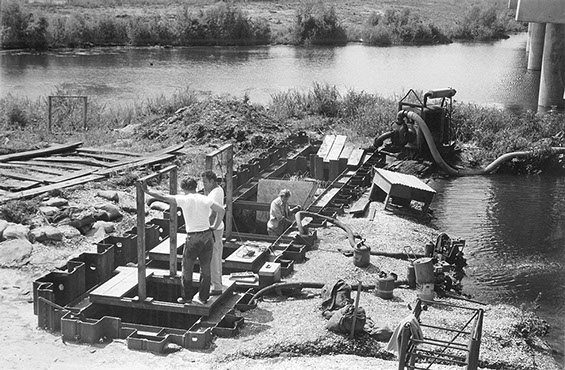Digging at Wet Sites
The Bayou Jasmine site is now 18 feet deep, but only the upper portion of the site is above water. The ground in this part of Louisiana slowly has sunk, submerging most of the site below water. The Louisiana Department of Highways funded a study of Bayou Jasmine in 1975, after construction disturbed the site. In order to work there, archaeologists needed a way to keep water from filling the area where they dug. The Department of Highways built a box, called a cofferdam, to enclose the excavation space. The cofferdam had sheet metal walls that went 26 feet into the ground! The enclosure was 50 feet long by 7 feet wide.
Next
Back
The cofferdam was only partly successful, and water continually seeped into the excavation units. The site also received heavy rains during the field season. Archaeologists used a 1,500-gallon-an-hour pump to keep the area dry enough to work. They also caulked the joints of the cofferdam panels to slow water leaks. Even so, water was a big problem for the archaeologists. Wet spots made it hard for them to see patterns in the soil. The dampness also caused the thin walls of earth between the cofferdam and the excavation to fall down.
The photograph shows how close the excavation was to the highway bridge and the bayou. Credit: LSU Museum of Natural Science.
